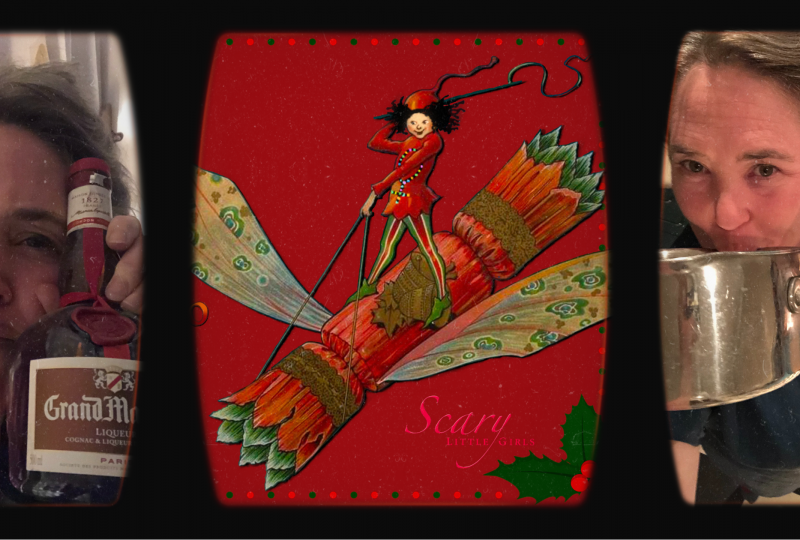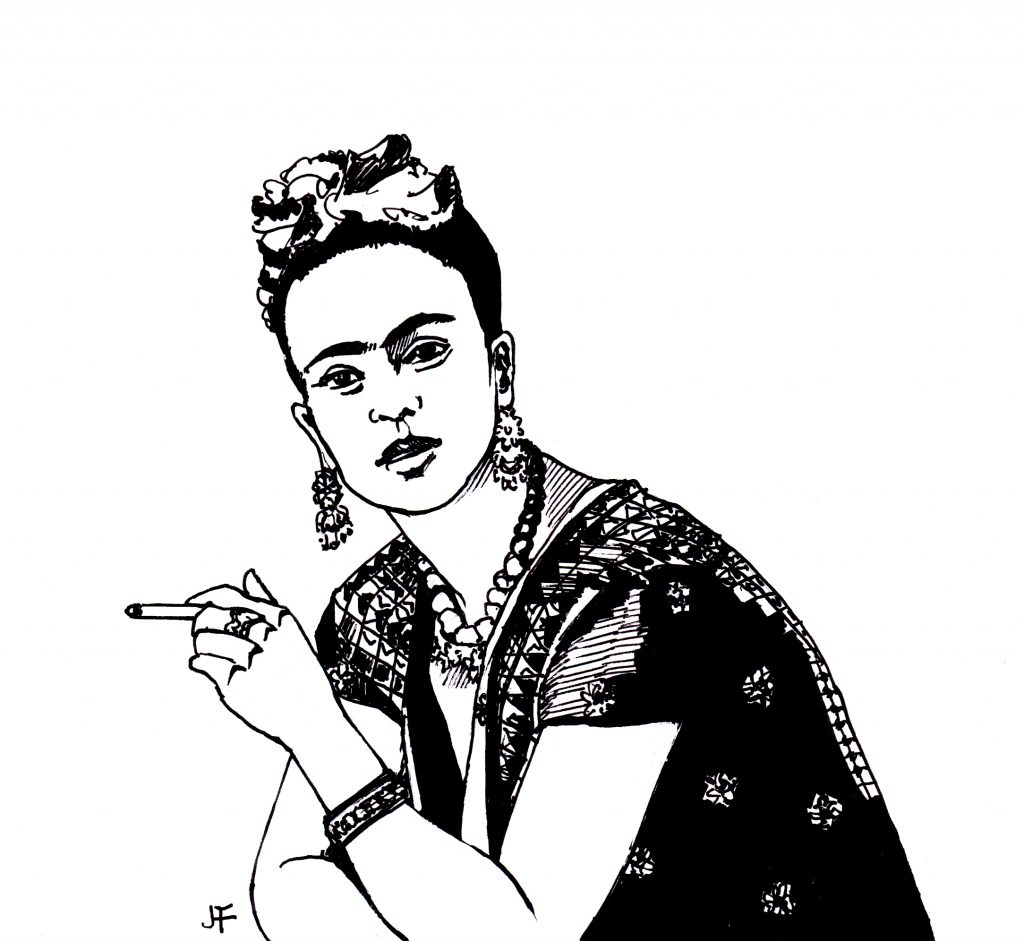
In this blog, actor Kiruna Stamell tells us how she became interested in artist Frida Kahlo. She will be joining us in our Salon on 17th November to explore the role of the artist as activist (and vice versa) and talk about Kahlo’s relationship to disability.
A quick google of the words ‘Frida Kahlo’ followed by a hit of the ‘images’ tab in your browser and your computer screen will become awash with Frida inspired ‘stuff’. Particularly stuff to buy. Cushions with cats, whose faces pay homage to Frida. Puzzles of Frida’s face. Graphics inspired by Frida Kahlo’s work. Framed Frida Kahlo quotes. Pop art, dressing gowns, fabric, cups, plates and placemats that feature abstractions of Frida and her aesthetic.
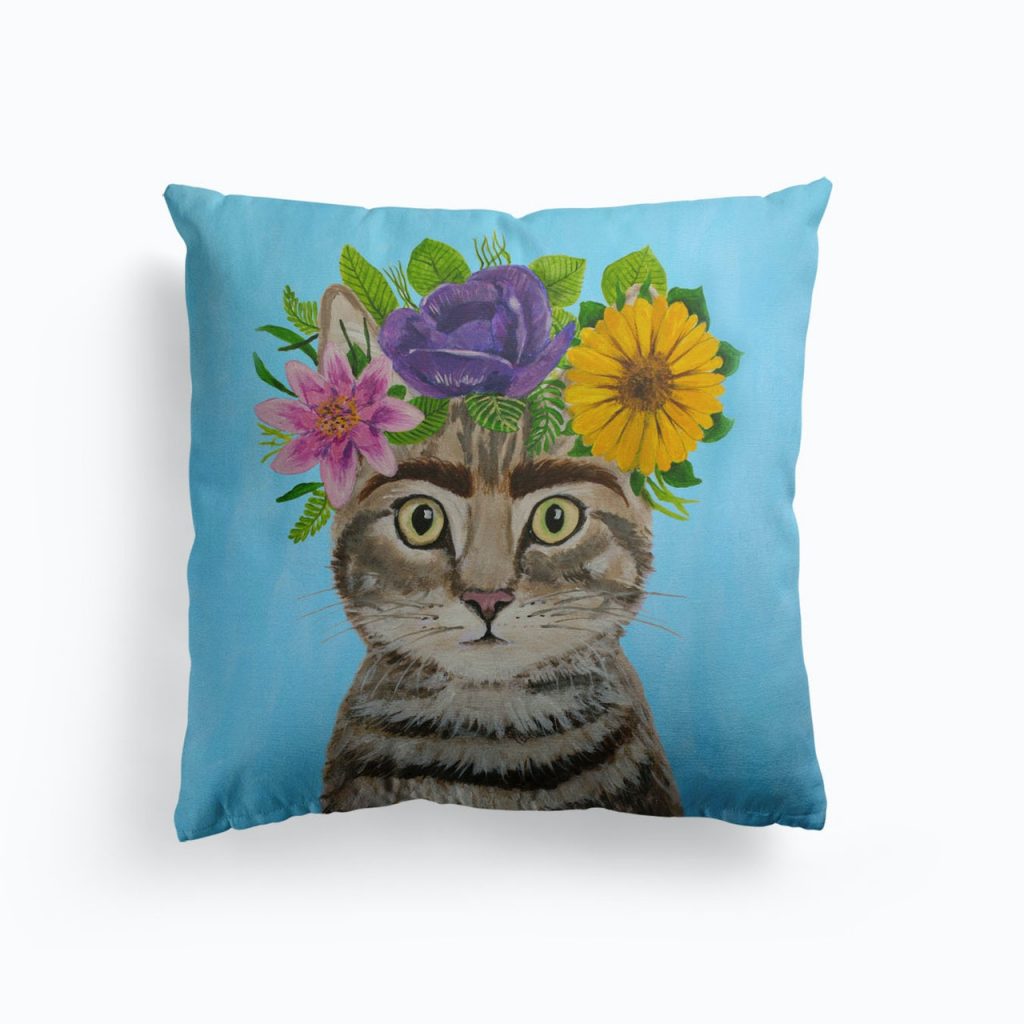
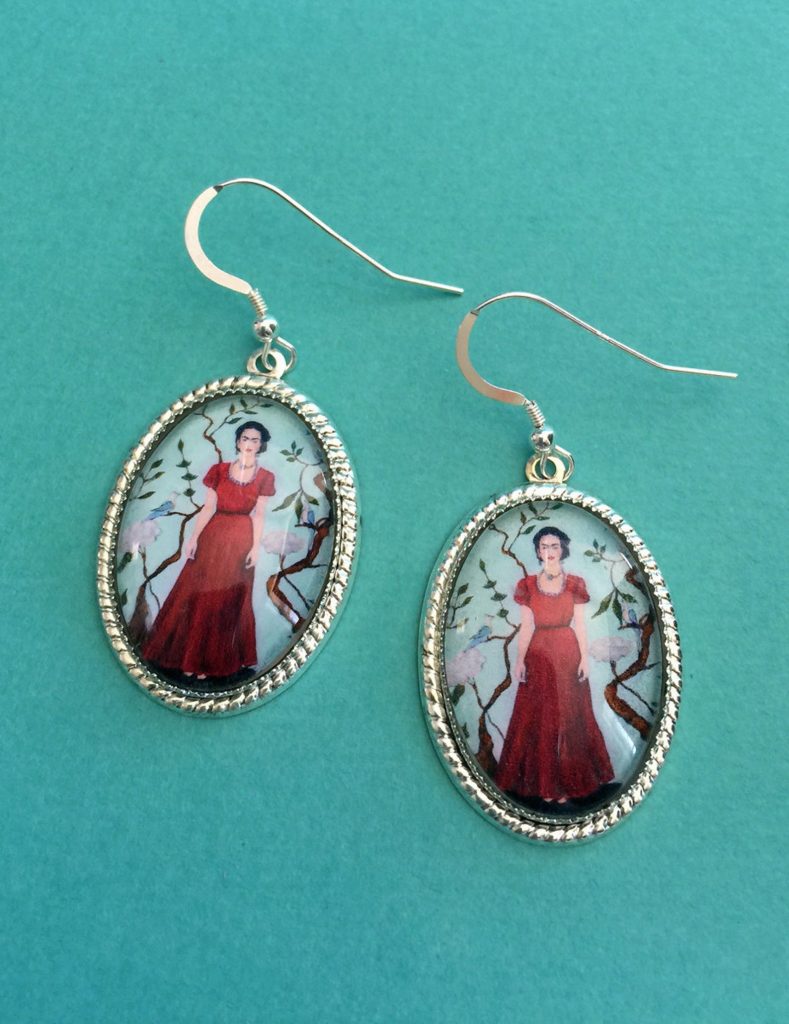
Further down your search results page you start to see Frida’s artwork peppering the melange alongside some authentic photos of her taken by boyfriend Nikolas Muray.
I came to be curious about Frida because of these many reproductions and pop-culture homages to her image, long before I rooted through the mess to try and find the real person and her work.
On the one hand, the burying of Frida’s authentic voice is a negative capitalist whitewashing. This is a true criticism and many women of colour have often noted their authenticity being abstracted – by predominately western capitalist systems and culture – to make them ‘palatable’ to mainstream ideology and to commodify. This is clearly happening here. But in a perverse way all this ‘junk’ and reductive imagery reproduction of her aesthetic and self, combines to create a yellow brick road that leads you to her and her work. Our interest is piqued by the reproduction and then we go in search of the real woman or in Frida’s case, her authentic artwork and voice.
I don’t know many people whose first introduction to Frida Kahlo was one of her paintings. But rather many have met her through the aura created by this clutter of things for sale.
A bit like the Mona Lisa, most of us only ever seen reprints, remakes, and re-imaginings of the original. It whets our appetite enough to journey to the Louvre, stand in line for hours and see the real thing. What we do then, is to have our picture taken with it, repost that image online and continue to build the myth around the art.
Now, some of us might search out a deeper understanding of Frida, her cultural heritage, her politics, and her art but of course not everyone will. Therefore, the distilled pop-cultural reductions of Frida continue to fuel her misunderstanding. Even after my intense dive into Frida Kahlo’s life for the chat with Rebecca, I was still struggling with the pastiche of reductive ‘stuff’ that swirled around her.
It is ironic Frida Kahlo is made famous by this commodification of her image. The woman literally dated Trotsky and was a staunch communist. Yet, there is a photograph of Theresa May, a notorious conservative politician wearing Frida Kahlo on a bracelet. Somewhere between the shopping aisles we’ve lost the true Frida.

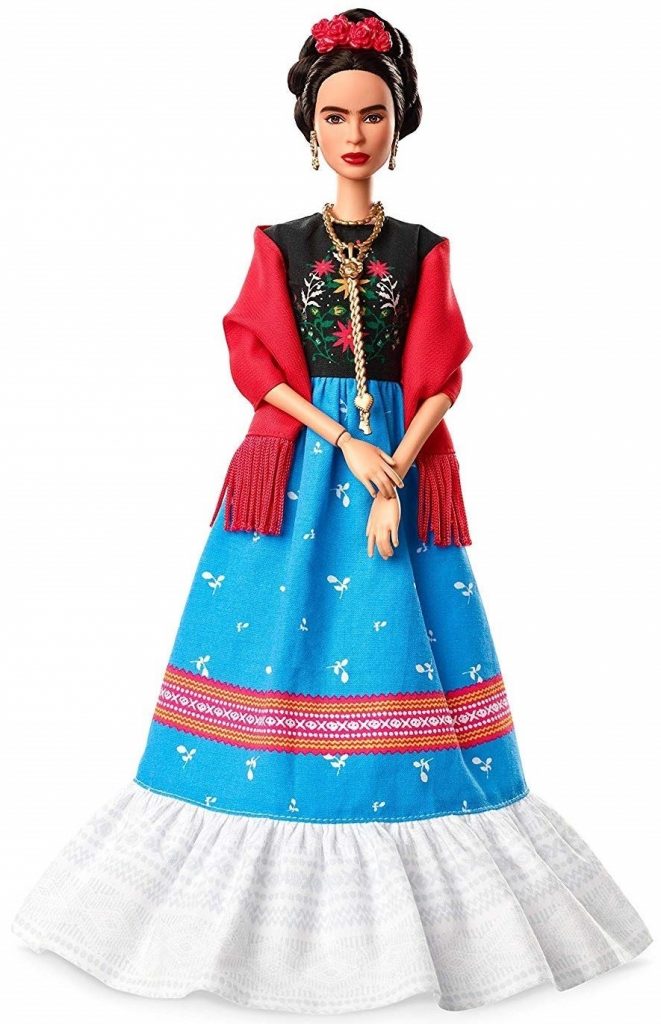
Frida Kahlo’s great-niece Mara de Anda Romeo was in dispute with Mattel over a Frida Kahlo Barbie Doll in 2018. The family won a temporary injunction to prevent the sale of the dolls. The injunction can’t have lasted long because the doll is now available to purchase as part of Barbie’s Inspiring Women Series.
Mara’s main complaint with the doll was that it didn’t really reflect Frida. It lacked the heavy monobrow and didn’t accurately portray her elaborate traditional Tehuana-style dresses. My main complaint with the doll and all of the imagery I’ve seen (with the exception of Frida’s own artwork) is that is also ignores Frida’s disabilities.
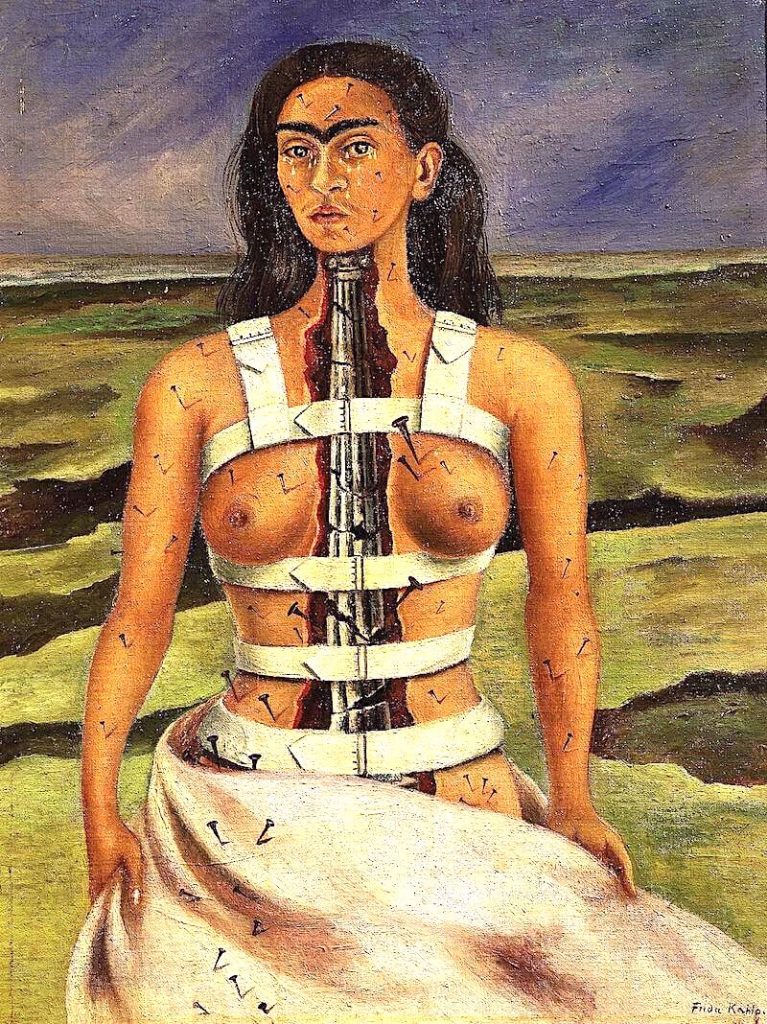
Disability is sewn into the fabric of Frida’s work alongside her Latin culture and heritage. She is a hugely successful Mexican artist that had her work recognised on an international stage, when women were generally ignored. Particularly women of colour. She is a feminist icon. But so often Frida’s intersectionality as a woman of colour and a disabled woman are forgotten. Snapchat was criticised for bringing out a Frida Kahlo filter that lightened her skin tone.
Yet in her own work, which is as close to hearing her own voice as we can get, these elements of her character are very present in her paintings. The symbolism and iconography that reference a Mexican and Latin lexicon sit around her shoulders in every self-portrait. Her paintings, which were often painted from the confines of her bed, deal with a deviant and broken body. And she represented her Disabled body in many of her artworks. Frida also painted and modified and painted her prosthetic leg, medical body corsets and other medical devices that she used. She was expressing her feelings about her relationship to these things in all her work.
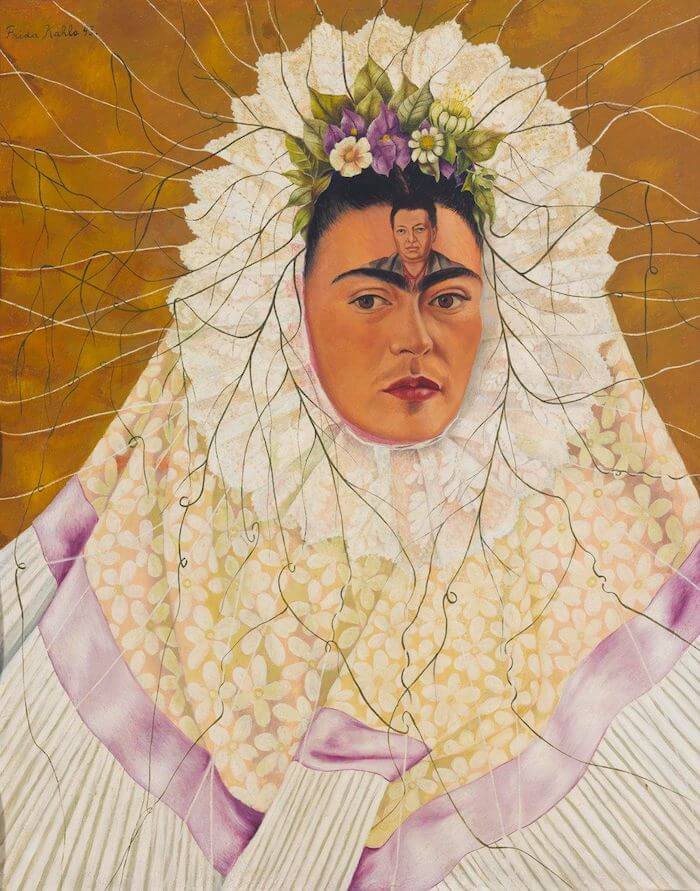
What I’ve taken away from this salon is that I am not even close to getting the whole of Frida. She is more different and radical than most of the tat available for purchase on Amazon, Etsy, Wayfair or the ‘shopping’ tab on google, will have you believe. Her Barbie Doll should have one leg shorter than the other, like the real Frida did, or a false leg, like the one Frida eventually wore as a prosthetic. The Snapchat filter shouldn’t have lightened her skin. Every conservative politician should know she was a staunch communist. And we should be able to name a handful of Frida’s artworks, not just know she had a monobrow. Every inch of Frida’s body was a protest against societal norms and so was her attitude.
In Frida’s own words, “I don’t like the gringos at all. They’re very boring, and they’ve all got faces like unbaked rolls.”
Join our Salon all about Frida on 17th November – get your free ticket here.
Image Credits:
Blue Cat Cushion from Iamfy.co (www.Iamfy.co)
Earrings from tinatarnoff
Theresa May photo from https://www.shropshirestar.com/ online news article picture by Peter Byrne/PA
Image of Frida Kahlo, The Barbie Store. Amazon.co.uk
Painting: The Broken Column by Frida Kahlo screen shot from https://www.fridakahlo.org/
Painting: Self Portrait as a Tehuana, 1943 by Frida Kahlo shot from https://www.fridakahlo.org/

